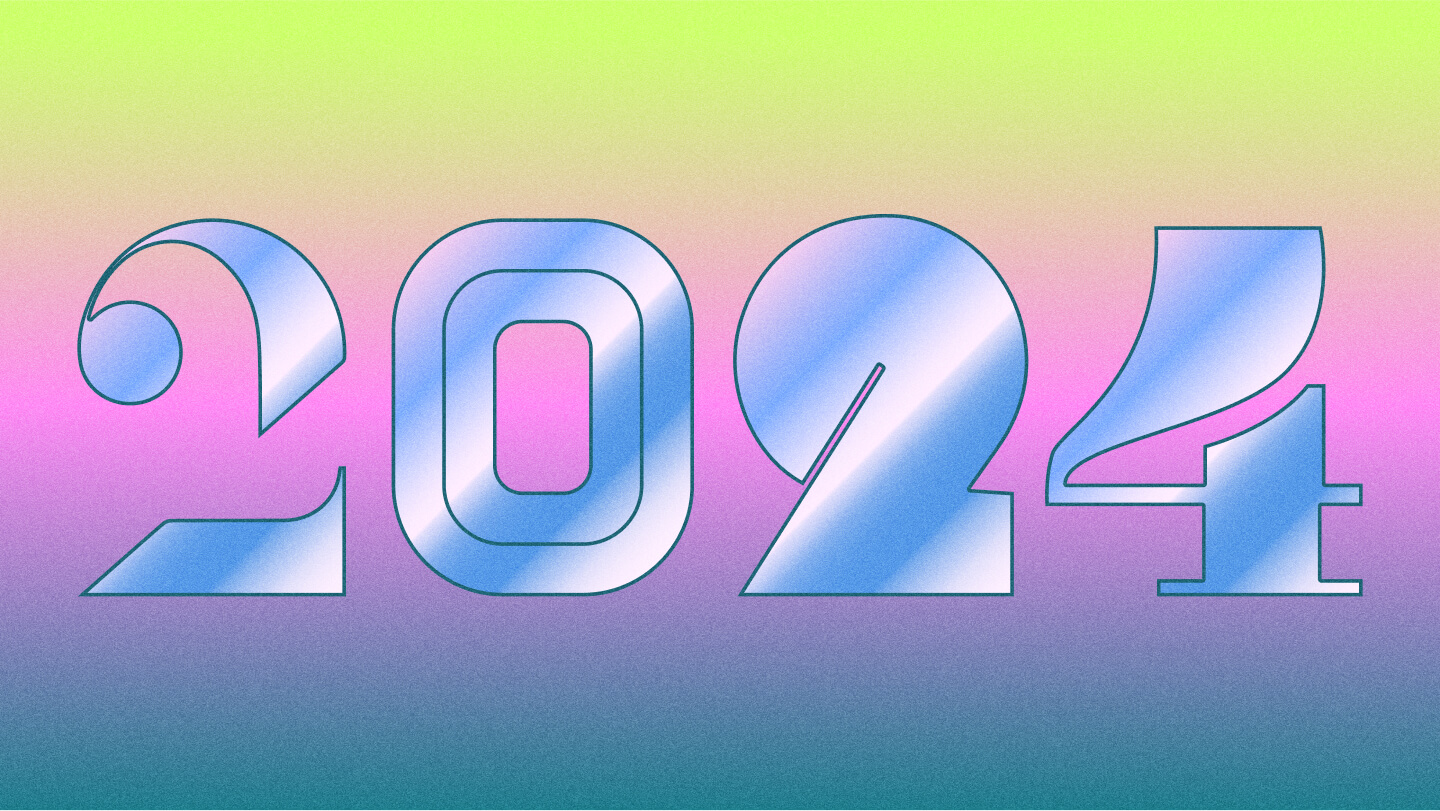What is a good interest rate for a savings account in 2024?
A savings account helps Canadians reach their savings goals quicker by offering earnings through compound interest. Interest rates play an essential role in savings, as it determines how much you’ll earn in your account each year. You want higher interest rates as your account will grow faster. Many financial service providers offer high-interest savings accounts (HISAs), which are savings accounts with higher-than-average interest rates.
Many people saw higher interest rates in 2023 as financial service providers raised their rates in response to market conditions. As the economic and financial landscape moves into 2024, we uncover what the interest rates will look like, what is considered a good interest rate, and what you should consider as you look into savings accounts.
An overview of interest rates in 2024
Several factors influence the interest rate set by financial service providers for savings accounts, such as market conditions and competitor rates.
One key factor influencing interest rates for savings accounts is the government. The Bank of Canada sets the policy interest rate, which financial service providers use as a base for lending, and when the policy interest rises, savings account rates also increase to attract new customers or more deposits.
You also may have heard of a “prime rate,” which is based on the Bank of Canada’s policy interest rate. This rate is typically lower and is only offered to those with good credit. The prime rate can be unique between institutions as it is individually determined, but they are often the same. It also impacts the variable interest rates on financial products, such as mortgages, loans, and investment products.
The Bank of Canada’s main goal is to keep inflation within the target range. The policy rate changes to help stabilize housing costs and control the economy. If inflation is above target, the Bank of Canada can increase interest rates to discourage economic activity, and financial service providers may increase interest rates in response. Most simply, Canadians borrow less and save more when interest rates are high.
On the flipside, when the policy rate decreases and other borrowing interest rates lower – you’ll likely see interest rates also decrease in savings accounts. This is because institutions can’t offer more interest for savings accounts than what they can charge on loans–to ensure they in a financial standing to issue loans and pay interest on savings accounts
Looking at interest rate trends over the past couple of years, even during the pandemic, the policy rate changed significantly. Initially, it fluctuated between 0.5% and 1.75%, then it decreased to 0.25% amid the pandemic. Subsequently, it gradually climbed to 5% by July 2023². As of January 24, 2024, the Bank of Canada announced it’s holding the policy rate at 5%², and most prime rates can be found around 7.2%.
Although institutions aren’t required to match increasing interest rate levels, competition among providers usually leads to an increase throughout the financial industry. As a result, most consumers received higher interest rates for savings accounts with their financial service providers.
Moving into 2024, experts expect interest rate hikes from the Bank of Canada to hold steady for the foreseeable future. However, it may still be a while before we see interest rate cuts. Canadians will likely see similar interest rates for their savings accounts until there are indications of interest rate cuts.
What is considered an average interest rate?
Average interest rates can vary greatly depending on economic conditions and competition between financial service providers. Each type of financial service product has its average interest rate relative to the market and competitors.
Traditional savings account vs. high-interest savings account
If you could guess from the name, a high-interest savings account provides more interest-earning potential to help grow your savings quicker than a traditional account. Looking at some of the major financial service providers in Canada, HISA promotional rates can go up to 6%³ in some cases. Most Canadian financial service providers pay below 3% on average for traditional savings accounts.
Promotional vs. ongoing interest rates
The difference between promotional and ongoing interest rates is their availability. Promotional rates expire when the promotion ends. For example, a promotional rate may be 5% while the regular interest rate is 3%. Promotional rates are typically welcome offers to attract new customers and deposits. Institutions may also offer promotional rates to existing account holders when they make a minimum specified deposit, for example.
Ongoing interest rates don’t expire, regardless of how long you’ve had a savings account with the institution. However, interest rates fluctuate with the market and institutions can change the rate they offer at any time. Once the interest rate changes, you’ll earn at the new rate.
Over the last year, financial service providers have offered as high as 6% interest for promotional rates on traditional savings accounts, while regular rates can go as low as 0.4%³. Some institutions have a tiered structure where the interest you earn depends on how much money you hold in the account.
What is considered a good interest rate?
Good is a subjective term when evaluating interest rates because everyone’s financial situation differs, and interest rates can fluctuate based on the economic and financial market. You should consider many factors when determining if you like the interest rate an institution offers for their savings accounts.
Here are some things to consider when choosing a good interest rate that fits your needs.
Could this help you achieve your financial goals?
One of the main reasons people have a savings account is to achieve specific savings goals, like paying for a new car or a vacation. Your savings account is a tool to help you achieve those goals, so it’s important to ensure the interest rate you have helps your account reach the target amount by the specified deadline.
Are you keeping up with inflation?
It can be hard to keep up with inflation. Supply shortages and demand increases have significantly raised prices everywhere, such as in household goods and housing.
The annual inflation rate reported in October was 3.1% and was at over 8%⁴ last year. Inflation decreases the value of your money over time, which means you won’t be able to have the same purchasing power in the future. If you don’t find ways to grow your money, you won’t be able to keep up with inflation.
While you may not get an interest rate that matches inflation, some financial service providers provide higher interest rates that help your money grow quickly. Looking for high-interest savings accounts is a great place to start, as they have higher rates than traditional ones. For example, the Neo High-Interest Savings account offers a 4% interest rate⁵, which can help you mitigate some of the effects of inflation.
Interest rates for different products based on your risk tolerance
There are different ways to ensure your money grows over time. You can deposit money into a savings account, open a registered account like a tax-free savings account, or purchase investment products like stocks. You can earn income from interest payments, dividends, and more, which increases your account balance over time.
Investing has more risks than holding your money in a savings account. Consider your risk tolerance and how you’ll react to fluctuations. If you’re okay with volatility, you may want to consider investing your money. If you don’t like to see fluctuations in your account, you may opt for safer options, like putting your money in a savings account.
A high-interest savings account is particularly beneficial if you’re risk-averse. You keep your principal while earning higher interest on your balance. The interest earned compounds based on a predetermined frequency to grow your money faster than a traditional savings account. It maximizes growth potential while minimizing your risks.
What else should you consider when looking for a savings account?
Interest rates are one of the essential factors to consider when looking for a savings account, but they aren’t the only important considerations to have. Savings accounts have many features that make them a great tool to help you achieve your financial goals. It’s important to align your choice with what matters most to you.
Here are some other considerations.
Account fees
A basic savings account is typically free for account holders, but you may only get a few features like limited monthly transactions. Some accounts charge a few fees for customers to access additional perks, like unlimited transactions, transfers, and withdrawals. If you’re eligible, the financial service provider may waive the account fee. For example, students may not have to pay monthly or yearly fees with a student savings account.
Minimum balances
A minimum balance is the balance you must keep in the account. Many savings accounts don’t require minimum balances, such as the Neo High-Interest Savings account. You can deposit whatever amount that works for you into your account and earn a high-interest rate on every dollar.
However, some financial service providers require account holders to maintain a minimum balance to qualify for their products. If you’re just starting to save money, you may want an account with no minimum balances to build your savings.
Security
Your money helps you accomplish your goals and have life experiences. It also helps shelter you in case of emergencies and unexpected expenses. You want to put your hard-earned money into a secure account with a reputable institution.
Access to funds
Consider how easy it is to move your money between accounts of the same financial service provider or to an external institution. Most financial service providers let you make unlimited free money transfers between your accounts with them, but there may be a fee to transfer to a different institution. You want to be able to withdraw your funds whenever you need.
Get started on your savings journey with a high-interest savings account
It’s easy to start your savings journey with a Neo High-Interest Savings account. It has one of the highest interest rates in Canada³, ensuring your money works hard to grow faster with monthly compounding interest.
We believe it’s never too early to start saving and learning about building your financial responsibilities. That’s why Canadians as young as 13 years old⁶ can open a Neo HISA. With no monthly fees or minimum balance requirements, it’s a great option to maximize your savings with low risk and earn a high-interest on your balance.
Learn more about the Neo High-Interest Savings account and open yours today in a few minutes.



